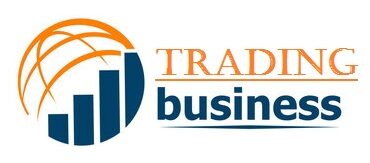For a business owner, knowing the various tax and fees allows you to establish an annual calendar of your tax deadlines, an essential tool to properly feed your cash flow plan and thus avoid delays, or even penalties. To summarize, there are three main types of taxation: the tax on profits, the territorial economic contribution (CET) and VAT. In this article, we will focus on the first two.
Income tax, a legal obligation
Every business has an obligation to declare its profits and income . For this, business creators must choose to subject their business to income tax or corporate tax. When they have the choice, it is necessary to be careful because this has important financial consequences on the taxation of the manager, on his mode of remuneration as well as on the payment of his ARE (compensation of Pôle Emploi).
To summarize, the following are subject to income tax: sole proprietorship (craftsmen, traders), liberal professions and EURL (single-person limited liability company). Then, depending on the nature of the activity, the taxable profit rate will be determined.
Income tax and corporation tax
If the activity is industrial, commercial or artisanal, therefore dependent on the BIC regime , it will be subject to the micro-enterprise or micro-BIC regime or then to the real regime.
If the activity is more of a liberal nature, therefore dependent on the BNC regime , it will be subject to the tax regime of the micro-enterprise or micro-BNC or then to the controlled declaration.
It is important to note that professionals are only subject to income tax on their salaries or dividends.
For its part, corporation tax is imposed de facto on the profits made by capital companies. In other words, this tax automatically concerns: public limited companies (SA), simplified joint stock companies (SAS and SASU), limited liability companies (SARL and EURL whose sole shareholder is a legal person), companies in limited partnership with shares (SCA), cooperative societies.
Note that under certain conditions, SA, SAS and SARL created for a maximum of five years may choose the partnership regime for a limited period and therefore be subject to corporation tax.
The taxable profit for corporation tax is calculated by applying the rules for determining the BIC under the real profits regime: either the simplified real regime or the normal real regime. According to the finance law for 2018 , this tax must gradually decrease to 25% by 2022. For the moment, it is 28% for profits below € 500,000 and 33.3% (or 1 / 3) beyond. In the coming years, the rate must adjust according to this schedule: 31% above € 500,000 in profits in 2019, 28% on all profits in 2020 and finally 26.5% in 2021.
However the corporation tax is a complicated calculation which has many specified accounting and other parameters. For example, we must pay attention to the remuneration of the directors and the interests of the partners, because they are deductible. Or declare the financial charges related to the acquisition of equity securities.
The territorial economic contribution or CET
Being an integral part of the taxation of business leaders, the territorial economic contribution is a local tax which since 2010 has replaced the professional tax and which aims to finance local authorities. This tax is split into two contributions which are distinct and which therefore have their own methods of calculation.
The territorial economic contribution is equal to the contribution on the added value of companies to which must be added the property contribution of companies. In other words CET = CVAE + CFE
Contribution to the added value of companies
Let’s start with the contribution on the added value of companies, a tax allocated to French municipalities, departments and regions. All companies with an annual turnover greater than 500,000 euros are liable to this tax. To calculate the added value produced by the company, it is necessary to differentiate between its turnover and the purchases of goods and deductible expenses. The amount of the CVAE can only correspond to a maximum of 1.5% of the added value. In the event that the company’s turnover is less than 500,000 euros, a minimum contribution of 250 euros is requested from the company. CVAE is due for the whole year by the taxpayer who carries out his activity on January 1 of the tax year, but is not due for the year of creation of the company.

